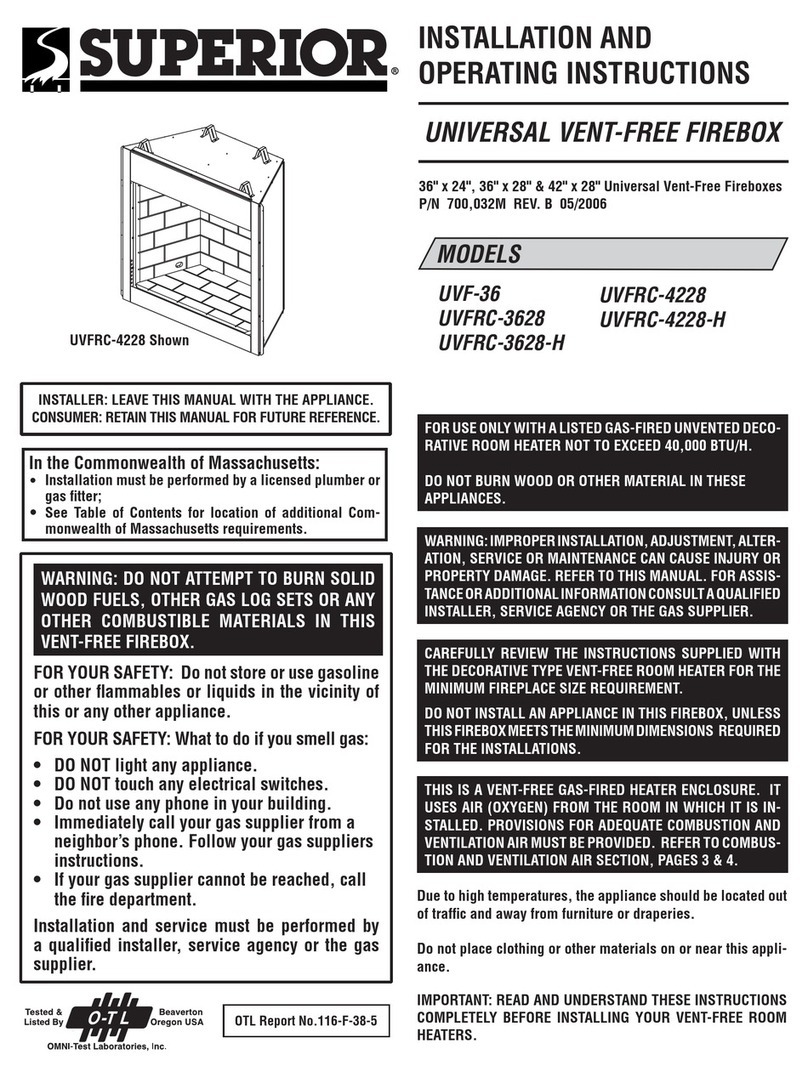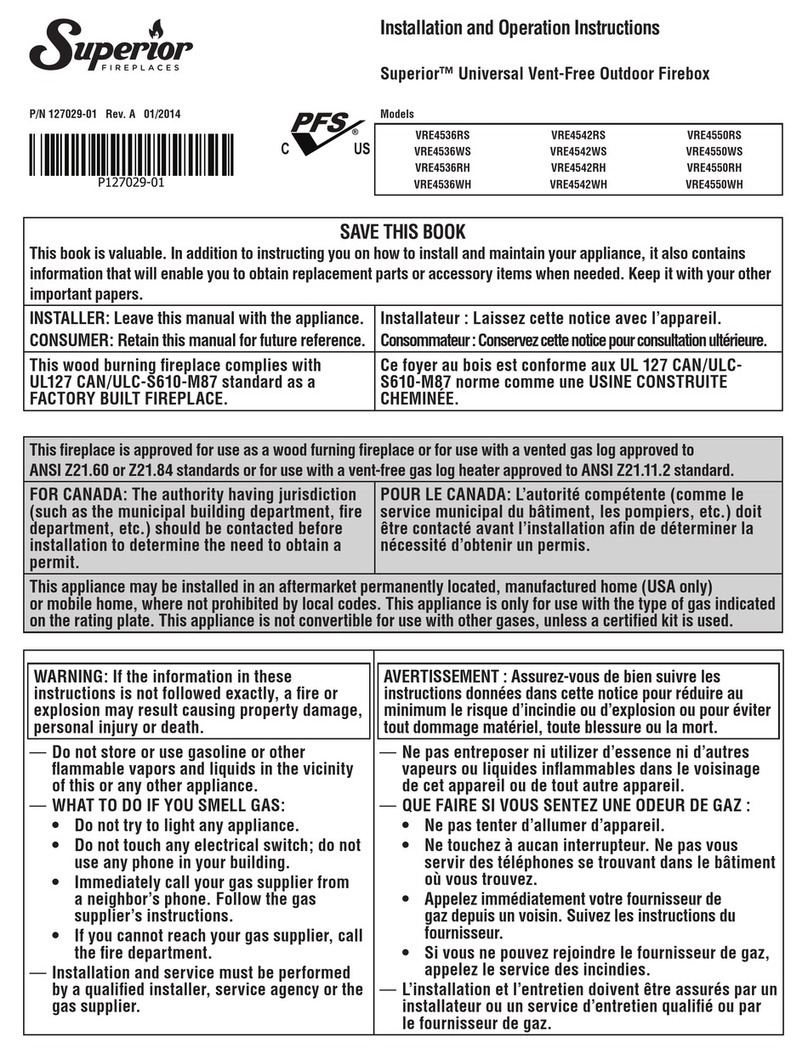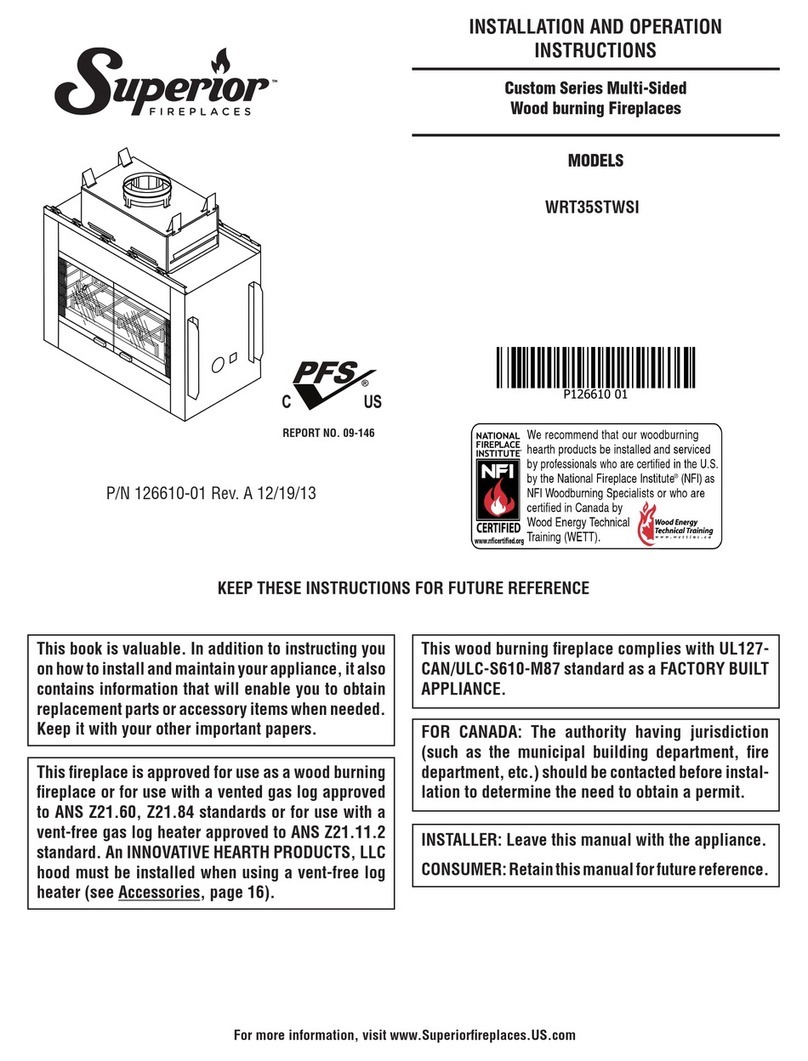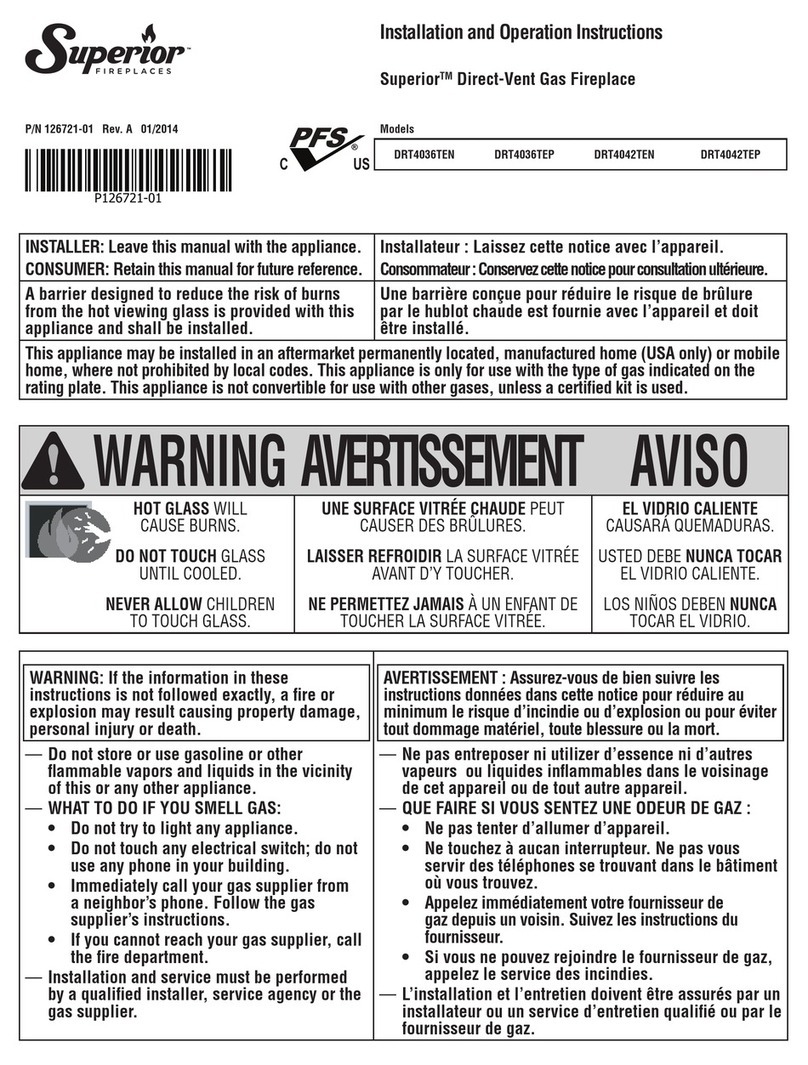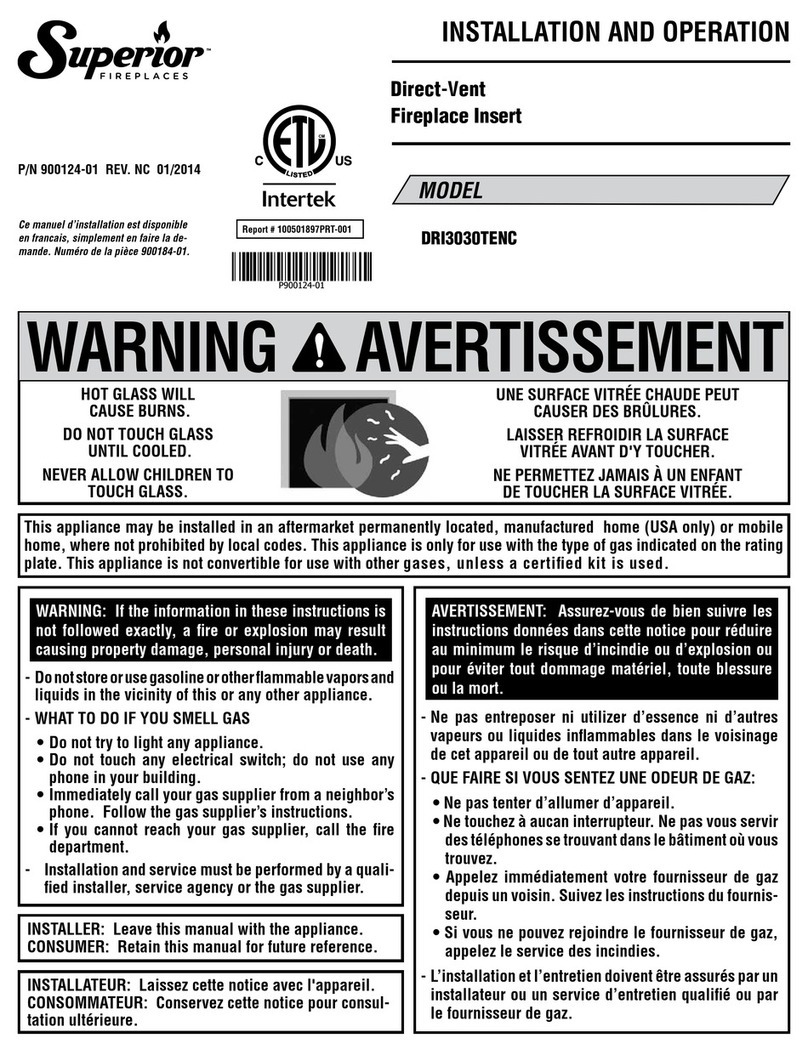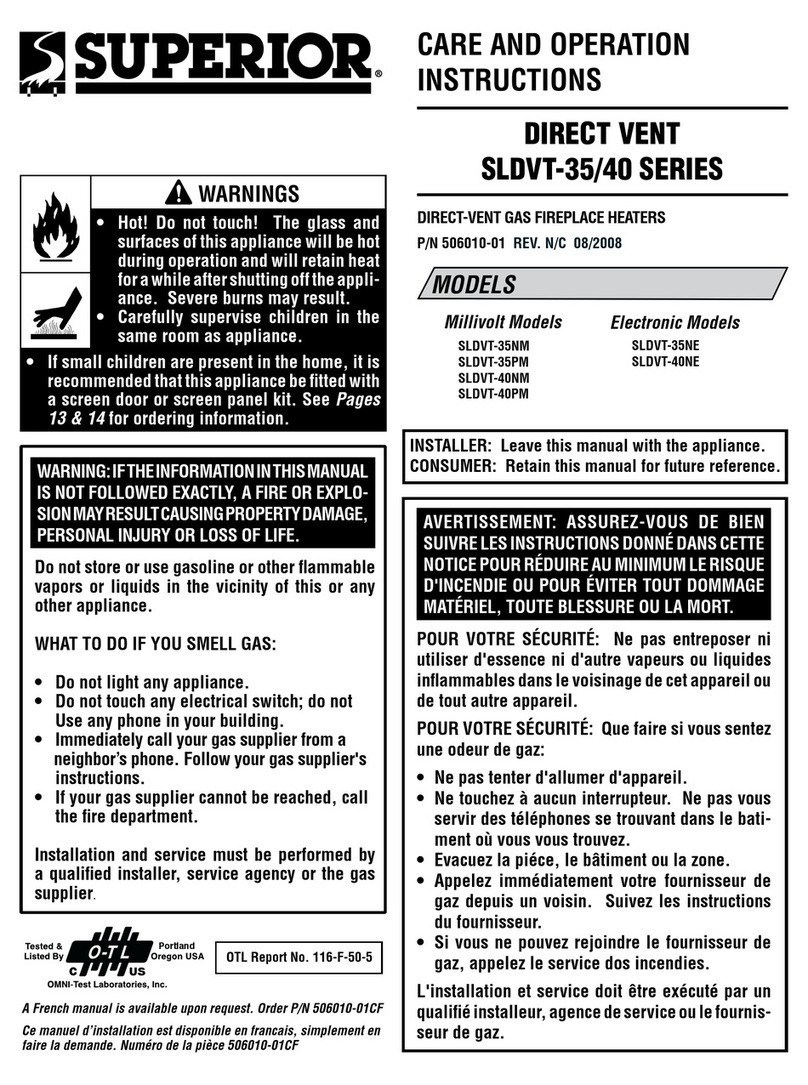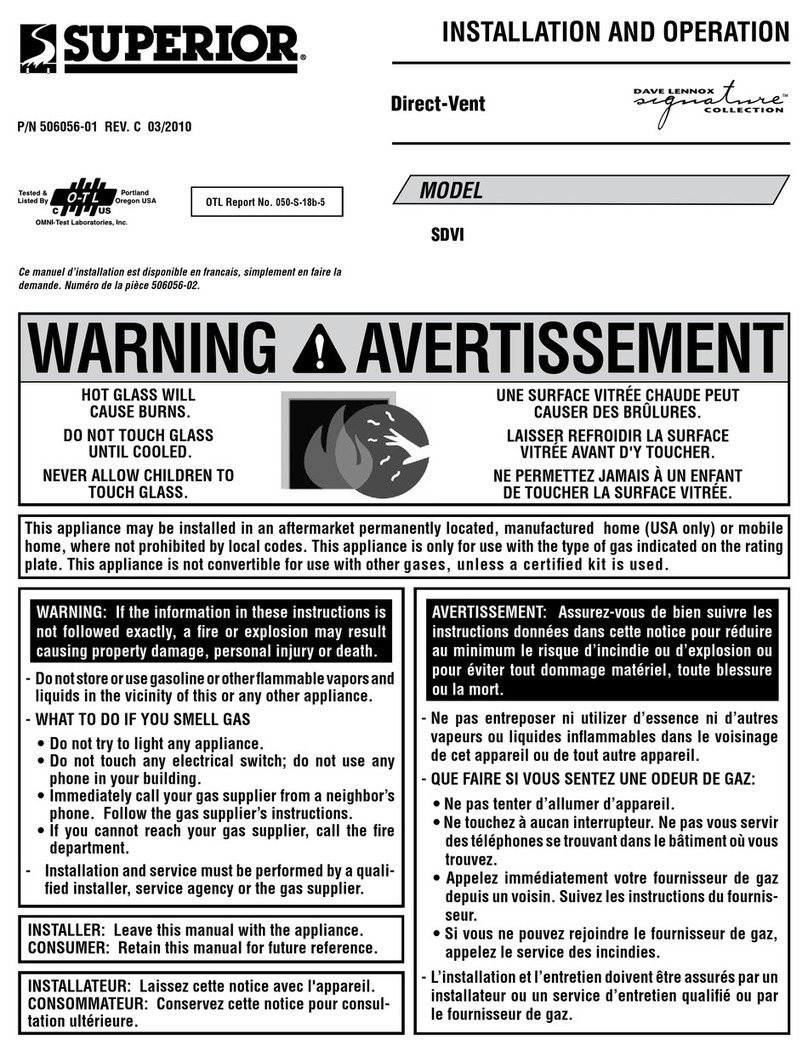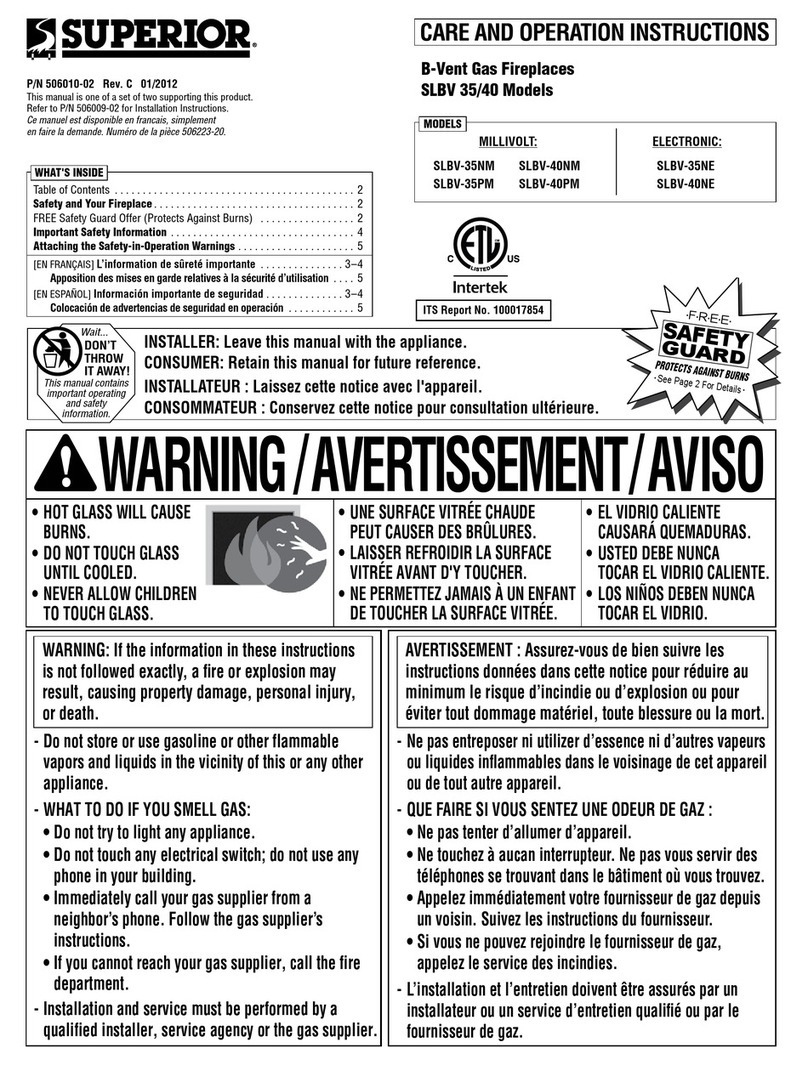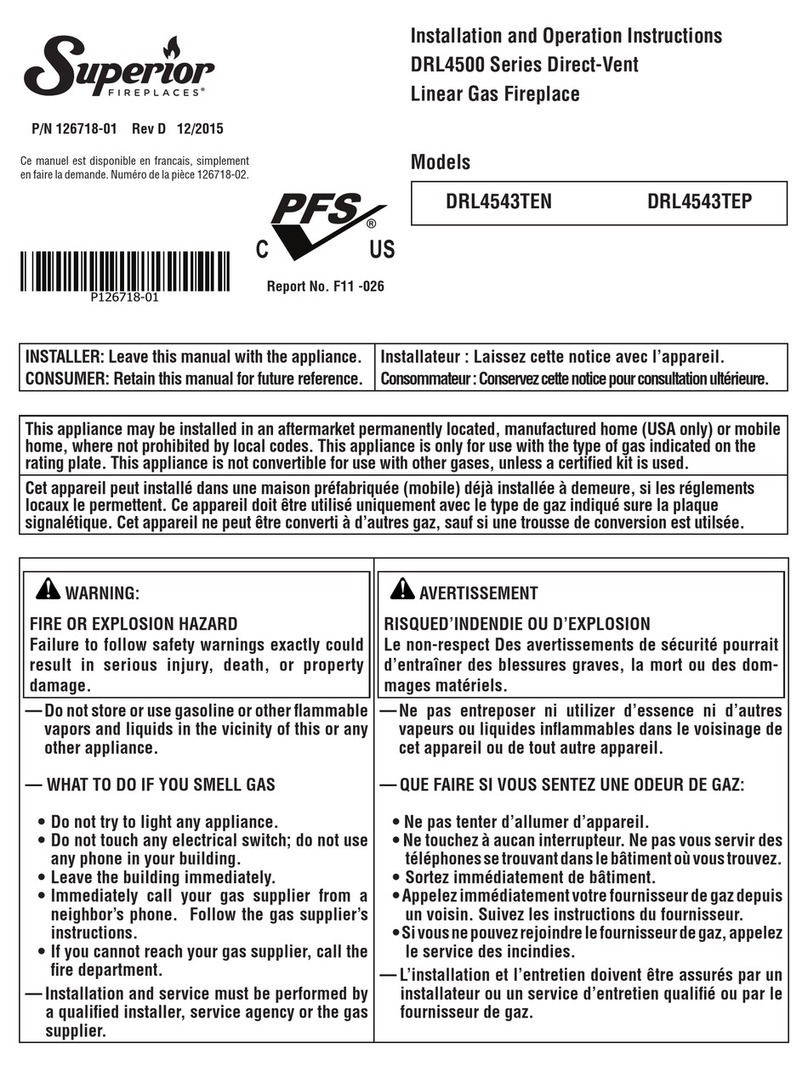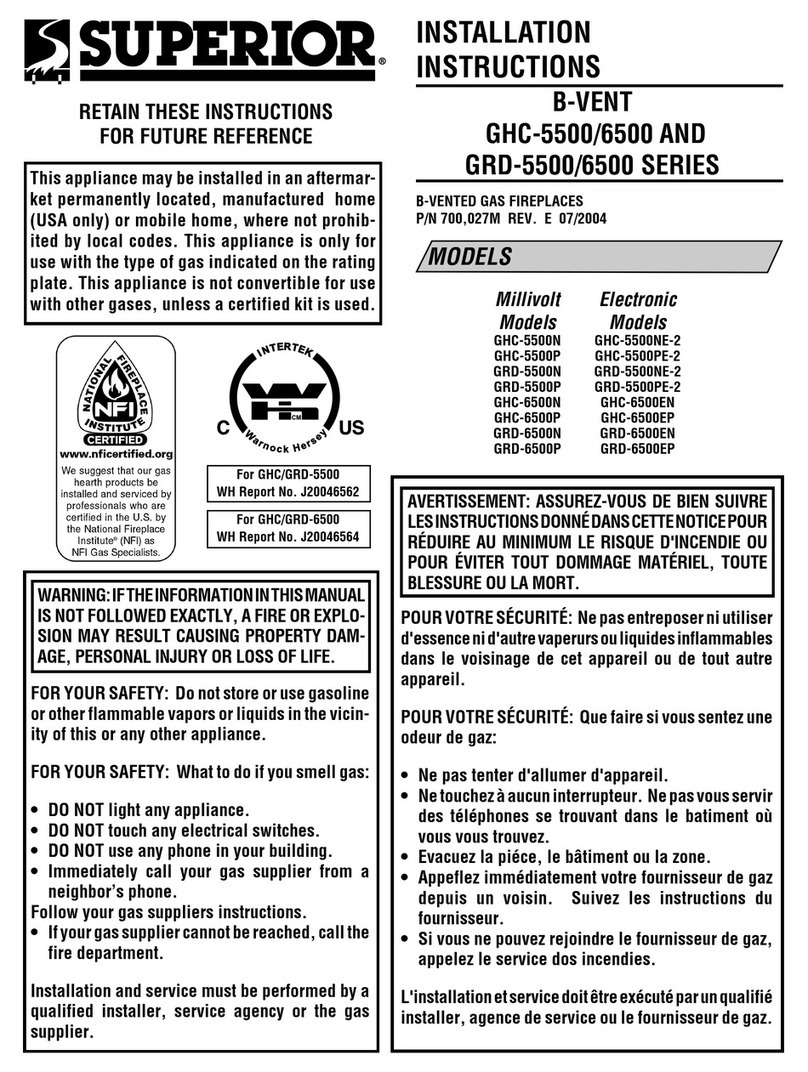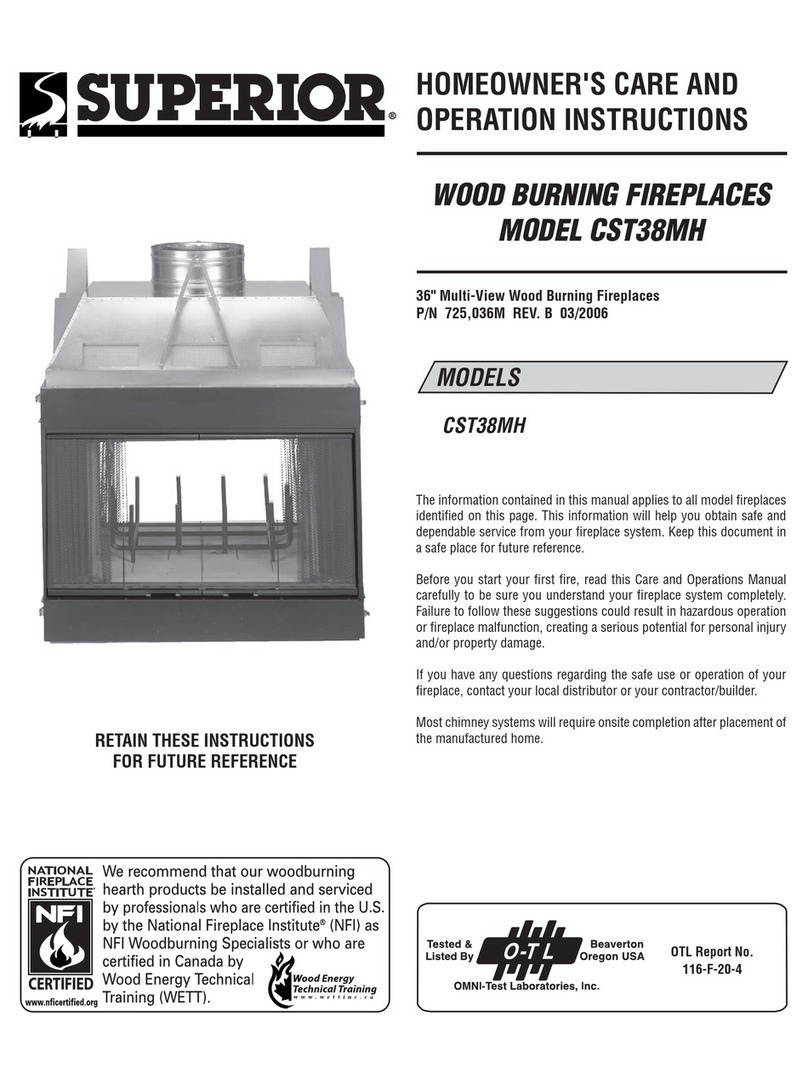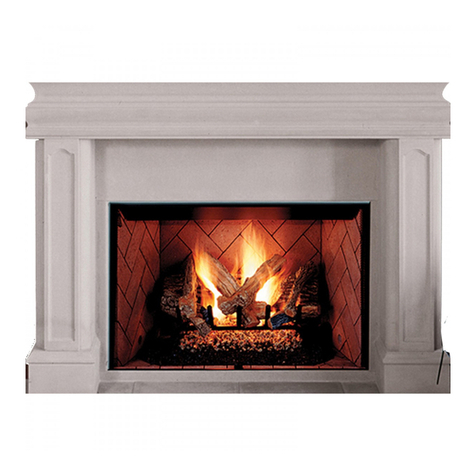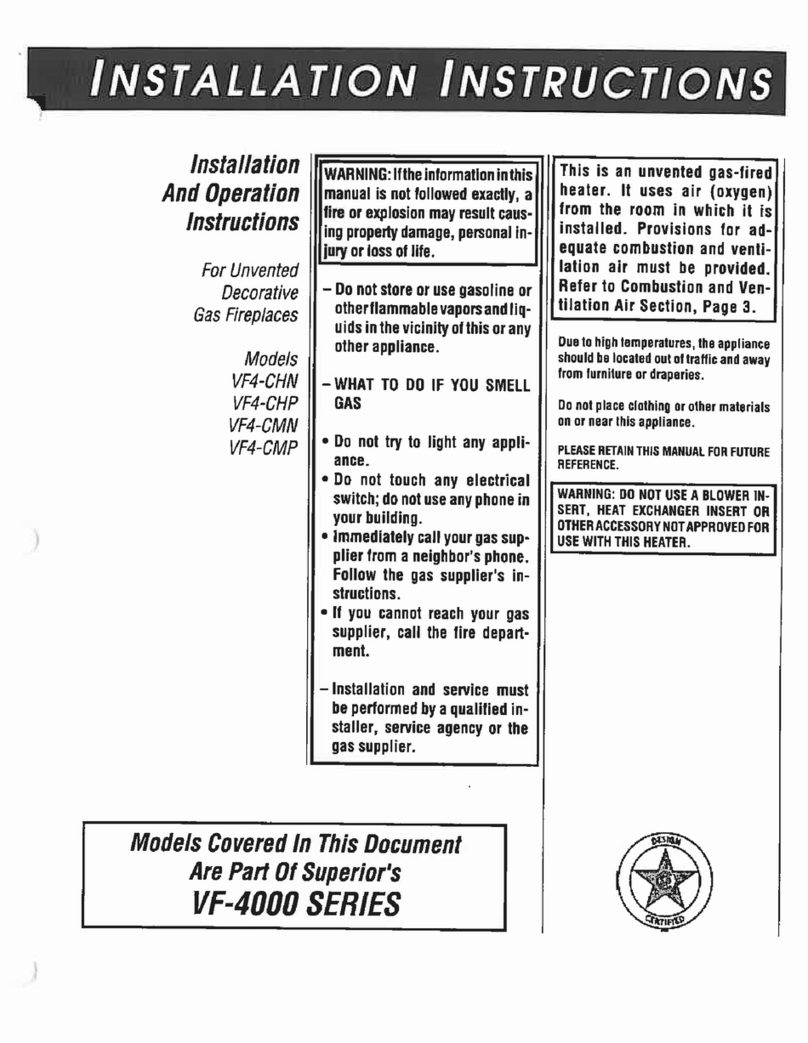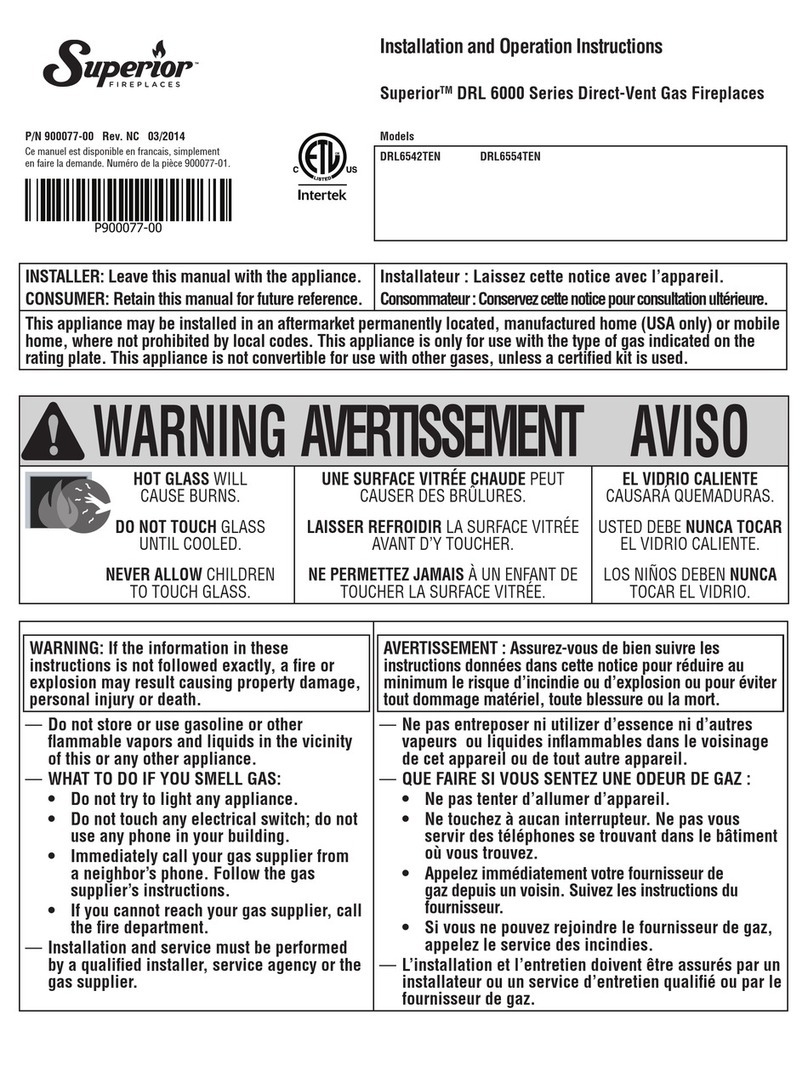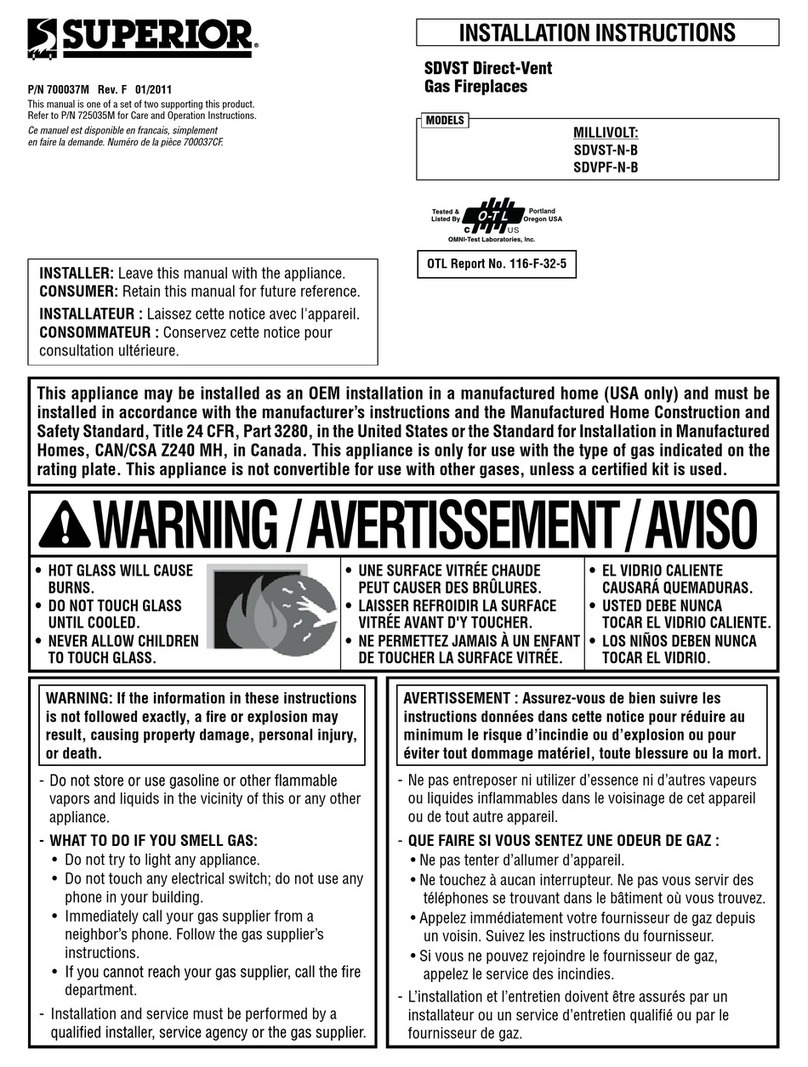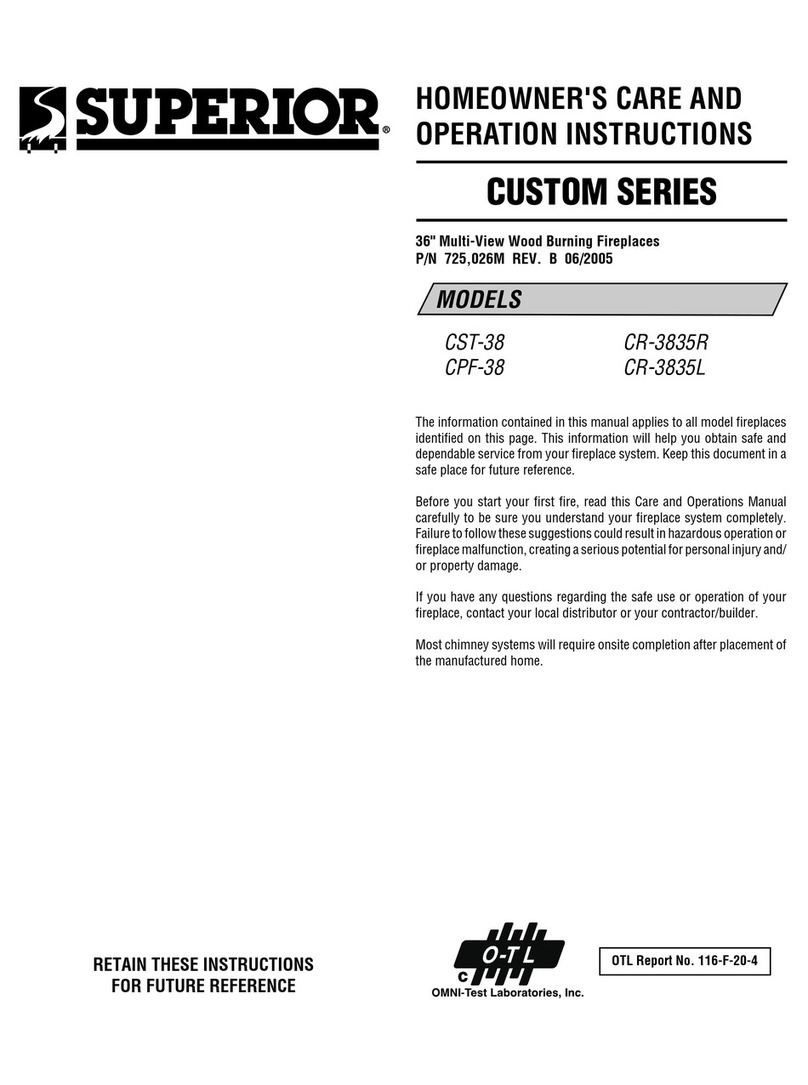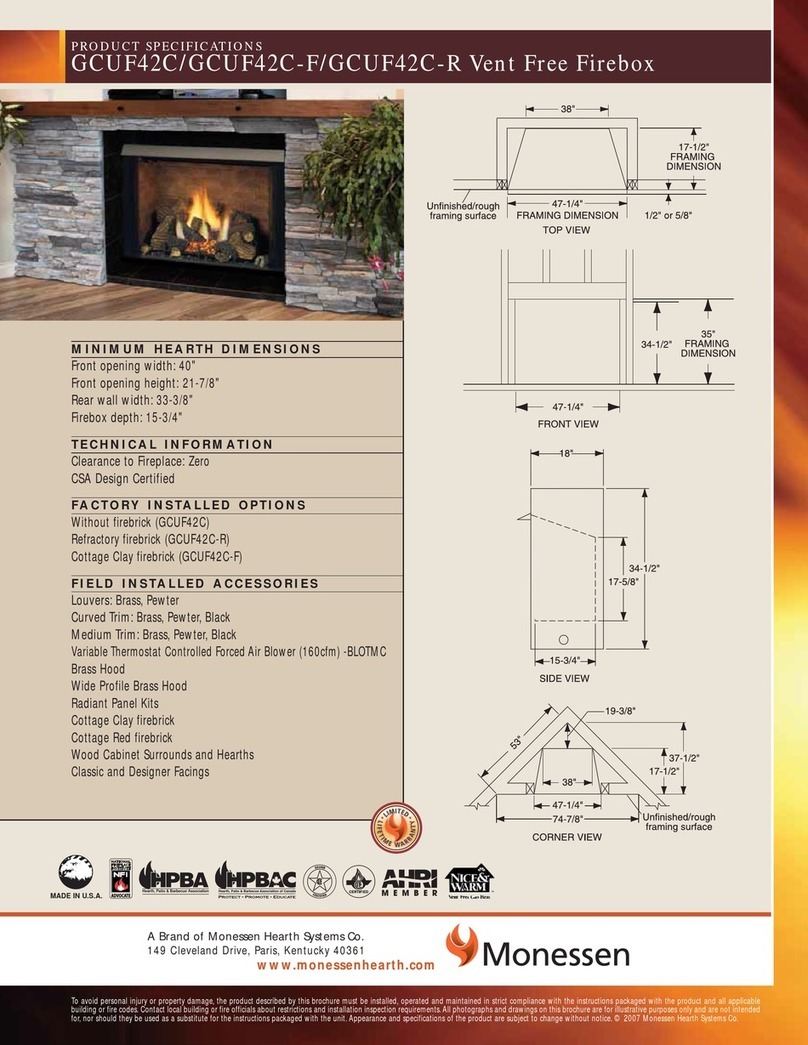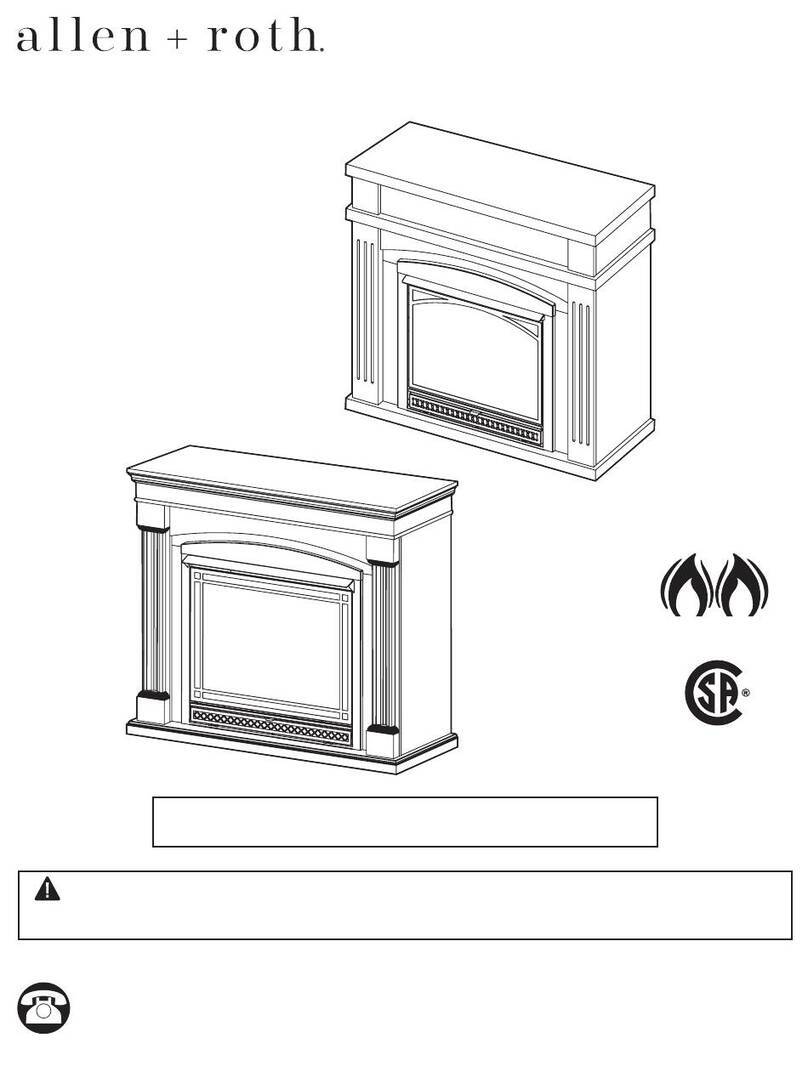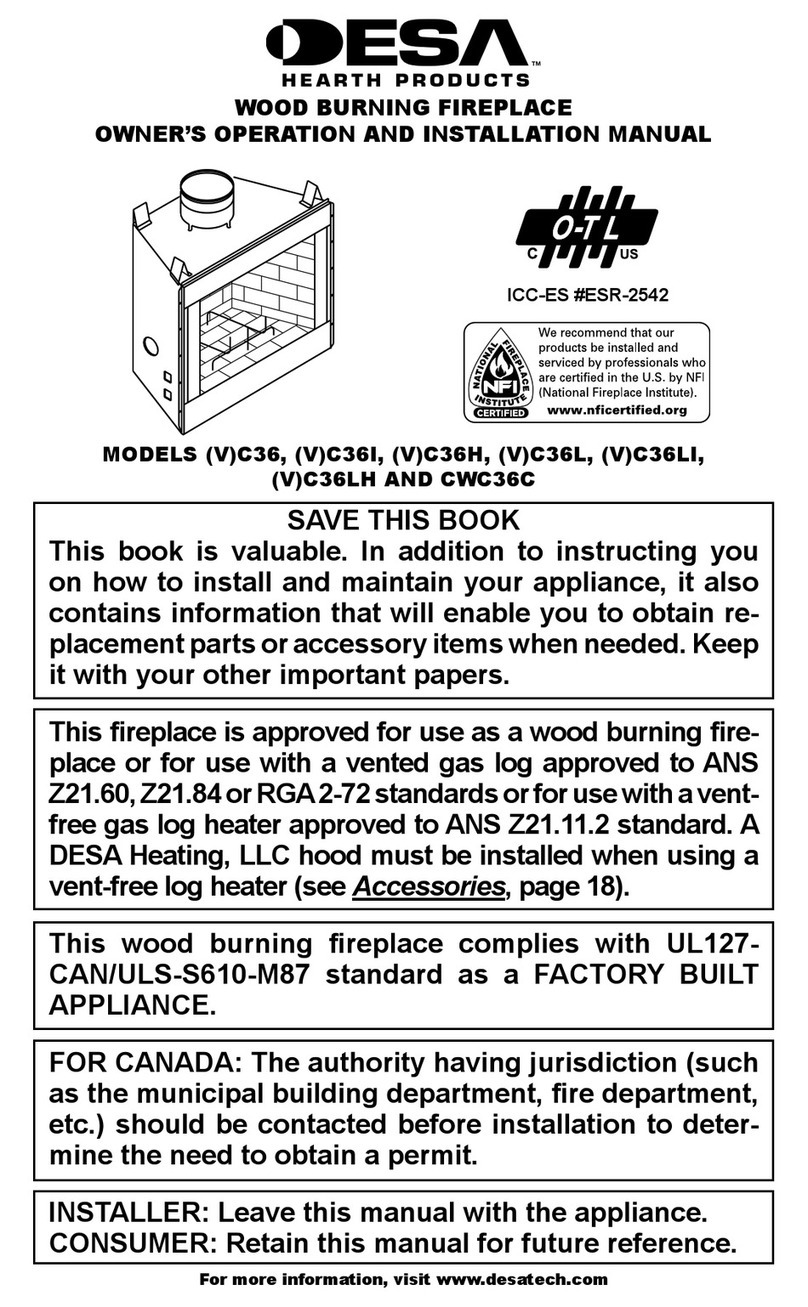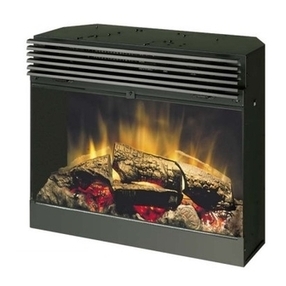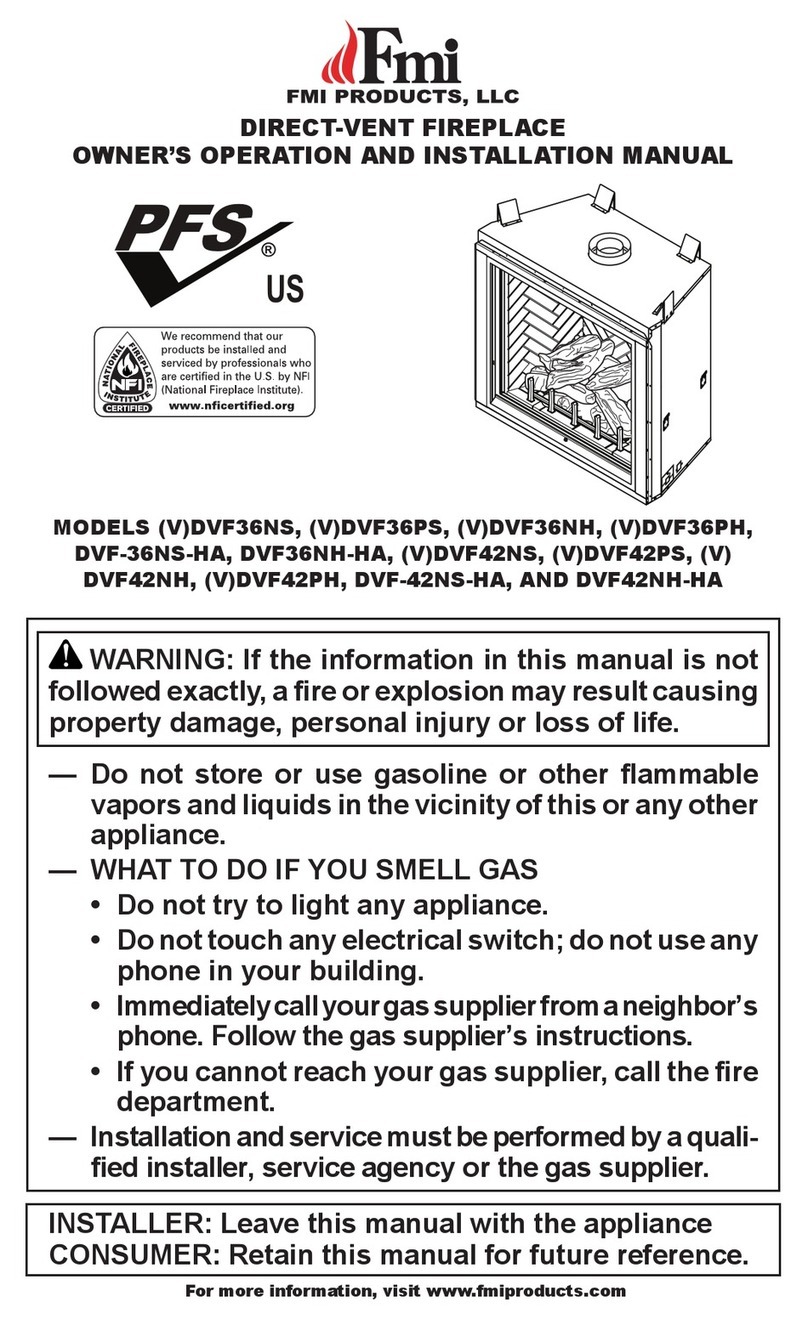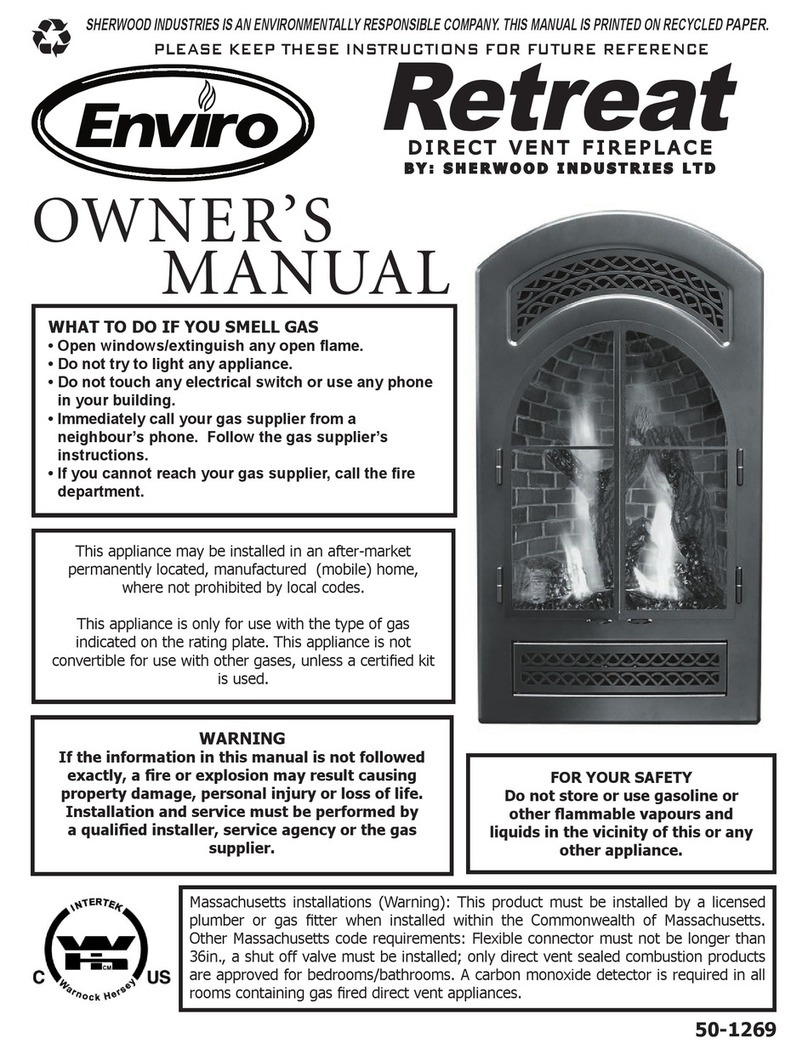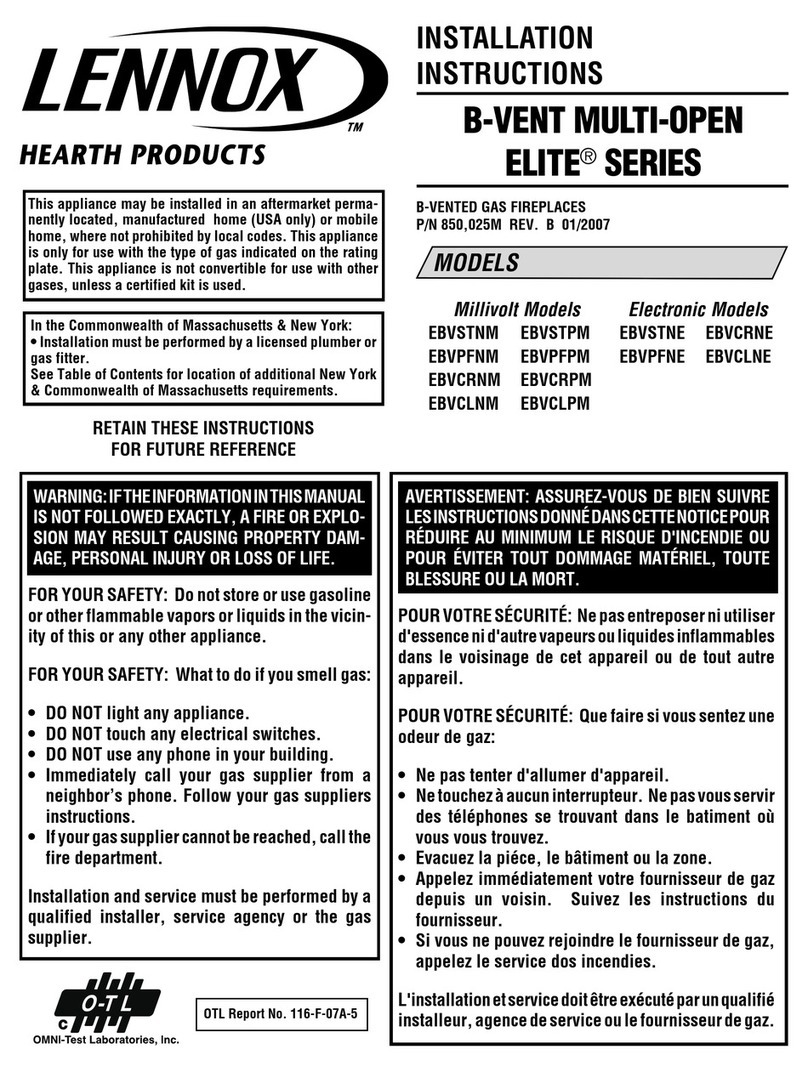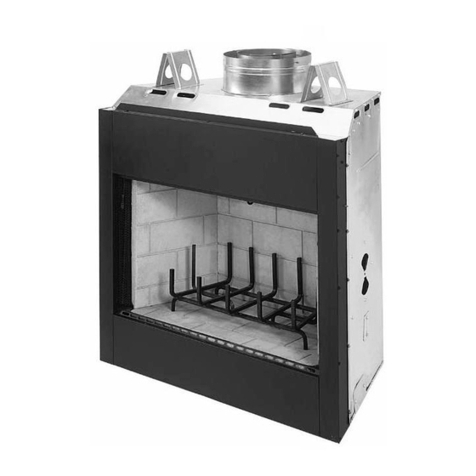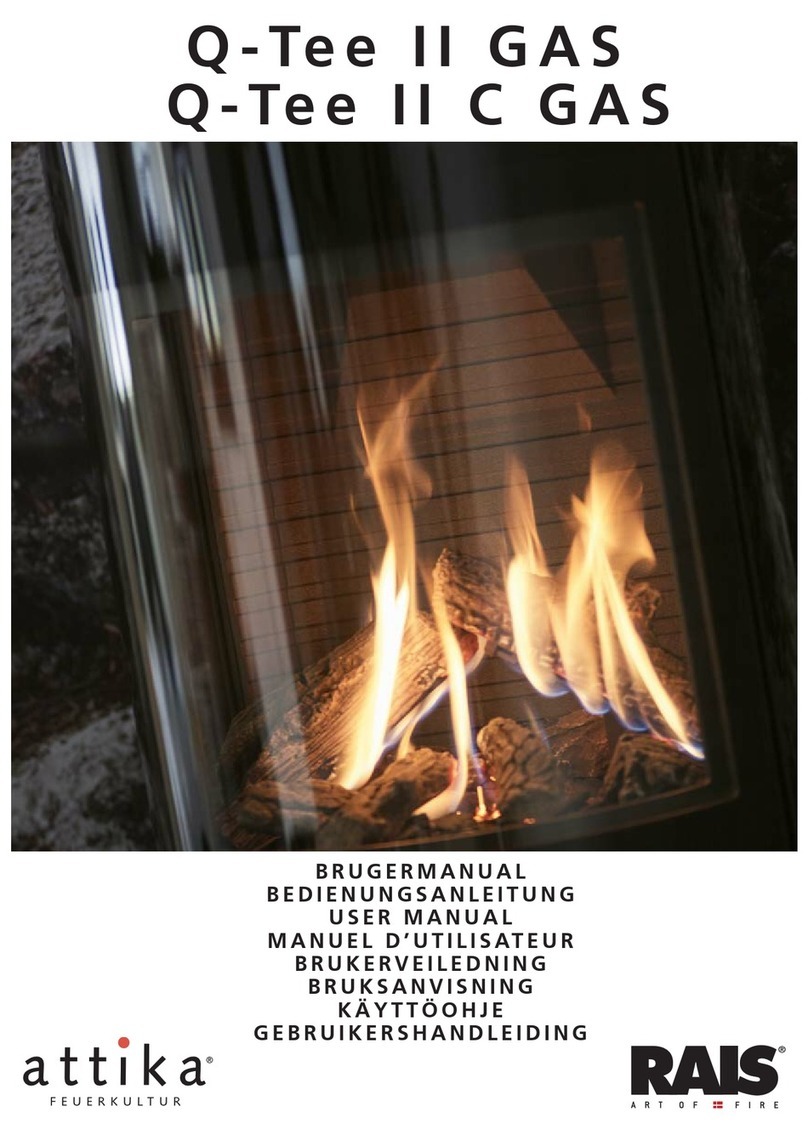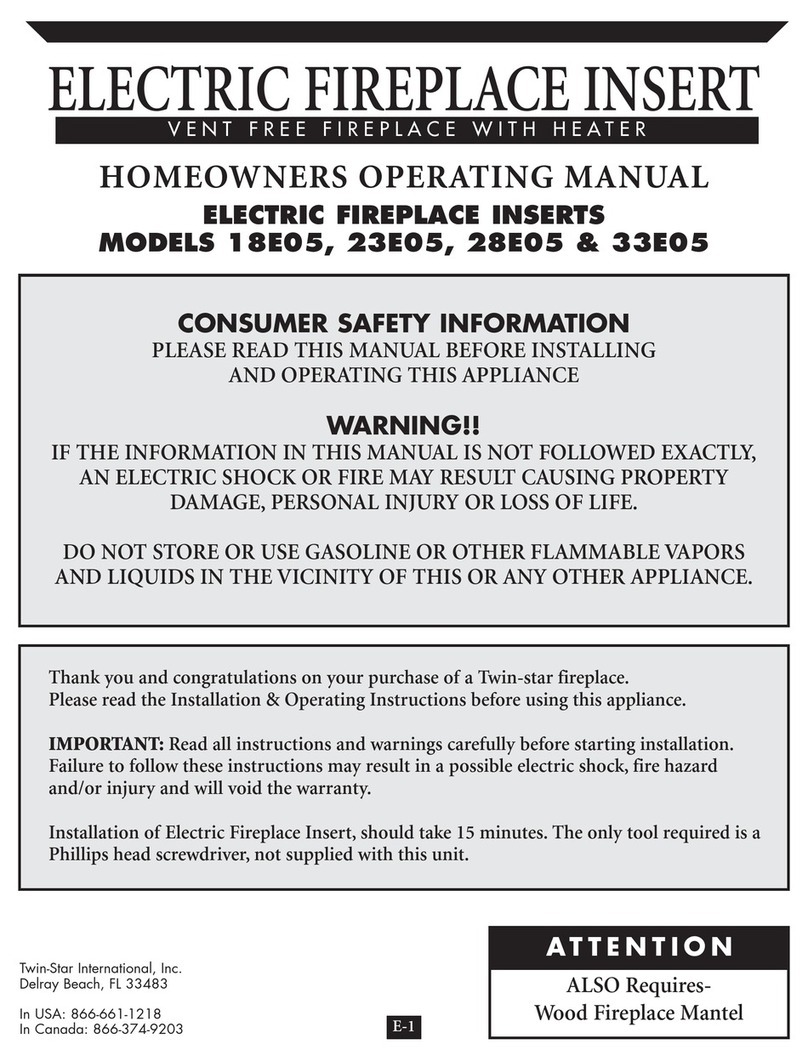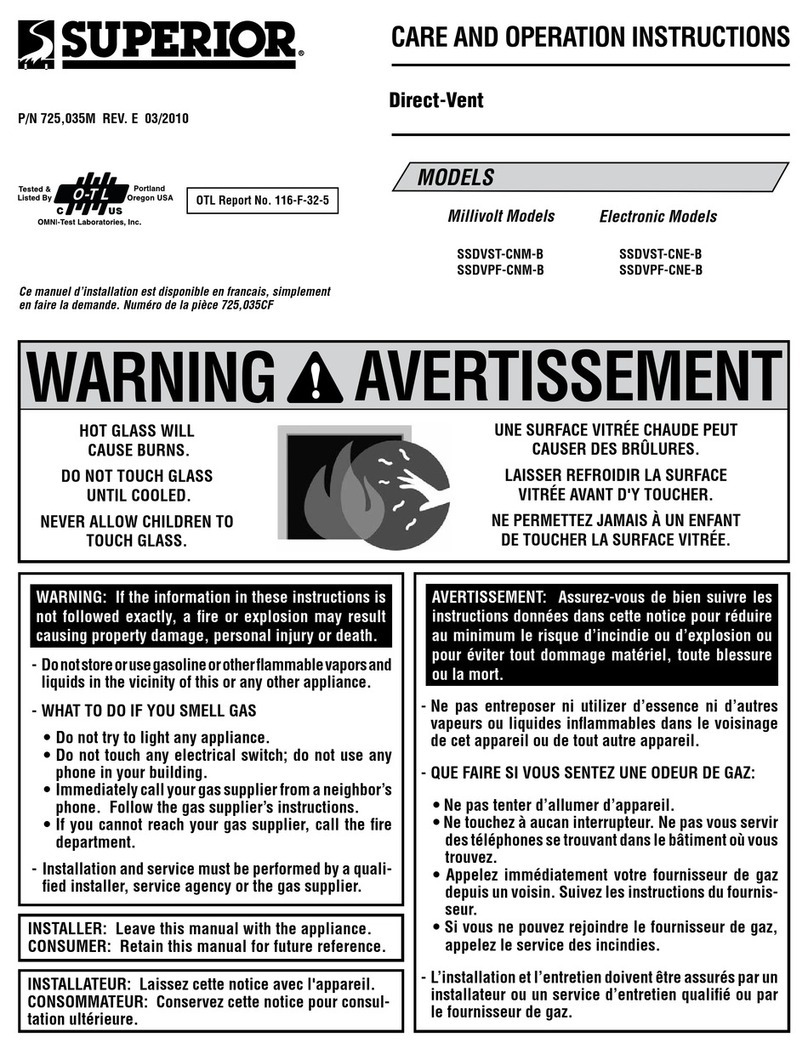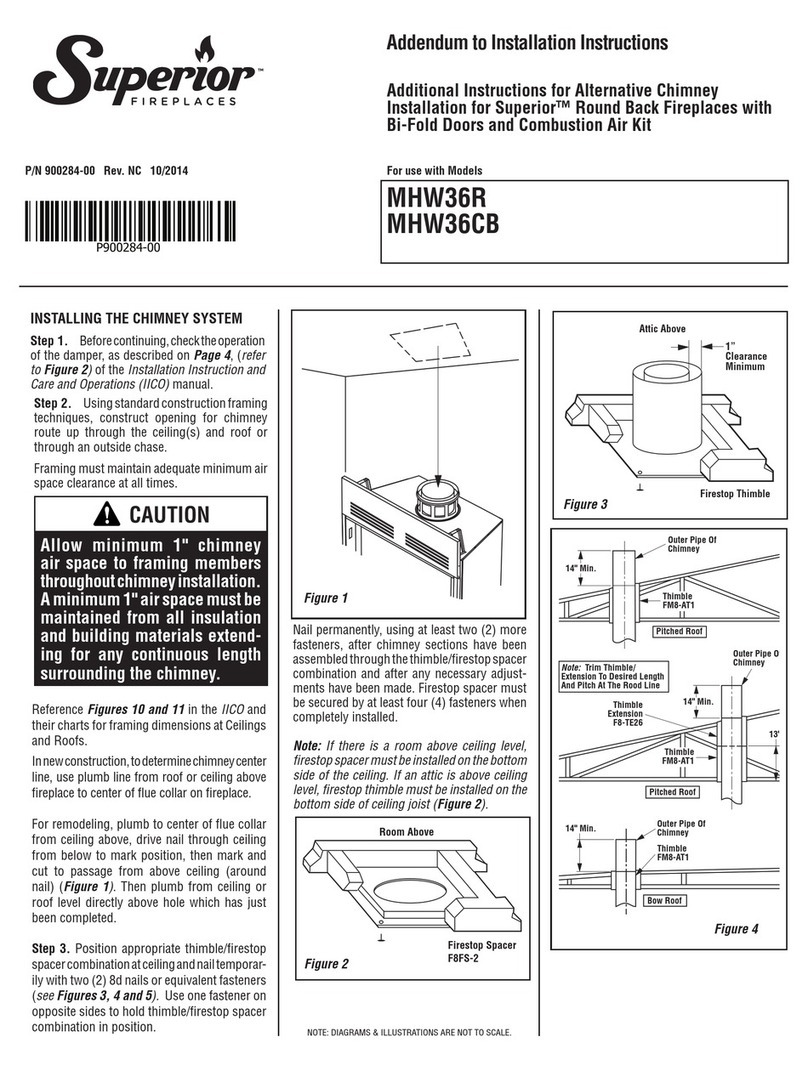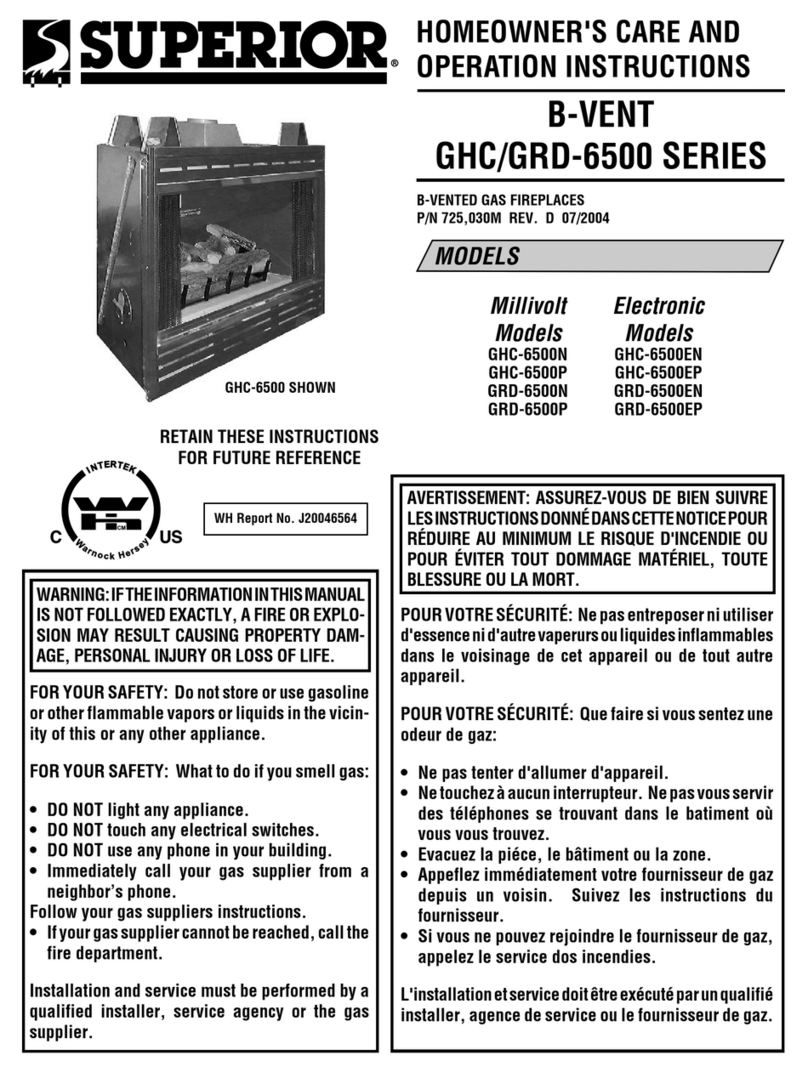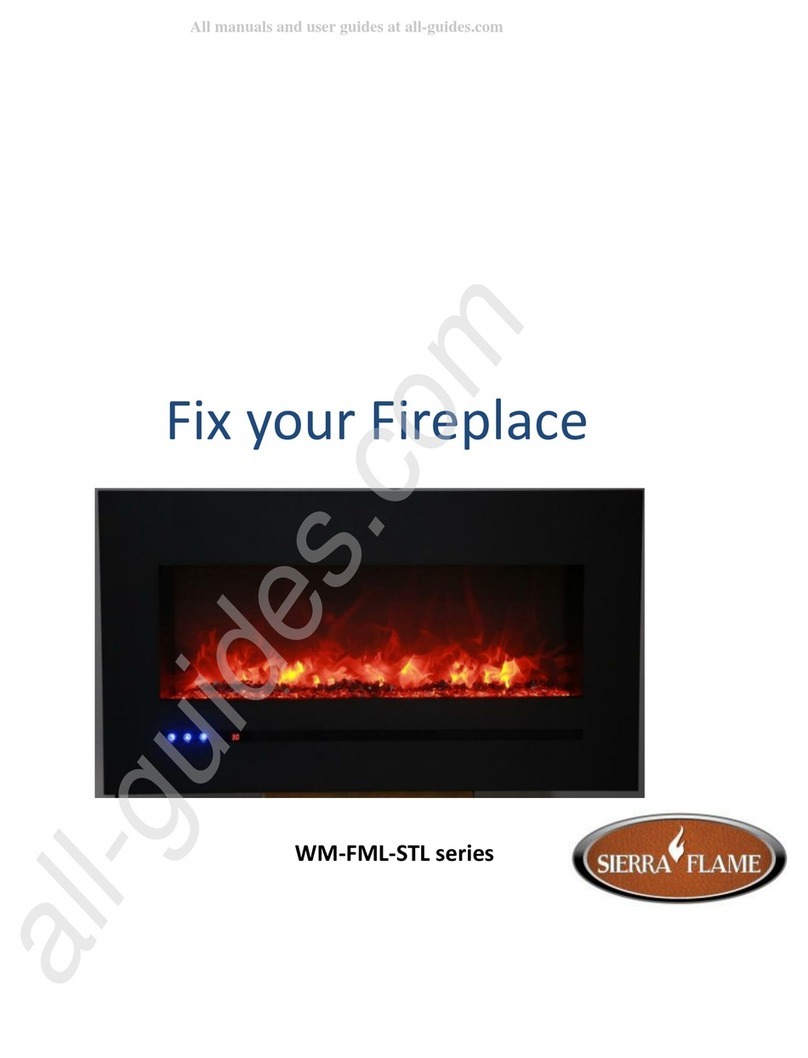
Superiorfireplaces.US.com
127020-01C 3
SAFETY Continued
WARNING: CONTINUED OVERFIRING CAN PER-
MANENTLY DAMAGE YOUR FIREPLACE SYSTEM.
SOME EXAMPLES OF CONDITIONS THAT COULD
CAUSE OVERFIRING ARE:
• BURNINGQUANTITIESOFSCRAPLUMBER,PINE
BRANCHES, PAPER OR CARDBOARD BOXES
WHICHEXCEEDTHEVOLUMEOFTHENORMAL
LOGFIRE.
• BURNINGTRASH,CHEMICALSORCHEMICALLY
TREATEDCOMBUSTIBLES.
"Disposal of Ashes
Ashes should be placed in a metal container with a
tight-fitting lid. The closed container of ashes should
be placed on a noncombustible floor or on the ground,
well away from all combustible materials, pending
final disposal. If the ashes are disposed of by burial
in soil or otherwise locally dispersed, they should be
retained in the closed container until all cinders have
thoroughly cooled."
"WHEN USING THE DECORATIVE APPLIANCE, THE
FIREPLACE DAMPER MUST BE SET IN THE FULLY
OPEN POSITION."
"Neverusegasoline,gasoline-typelanternfuel,kero-
sene, charcoal lighter fluid, or similar liquids to start
or ’freshen up’ a fire in this fireplace. Keep all such
liquidswell awayfrom thefireplace whileit isin use."
Use SOLID WOOD only for fuel. It is best to use dry
and well seasoned hardwood. Softwoods tend to burn
veryquickly.DONOTusetreatedwood,charcoal,coal,
trash,driftwoodorwoodsthathavebeendippedintar,
pitch, pine tar, creosote, etc. Wood products made
with synthetic binders, such as plywood, produce ab-
normally high temperatures and sputtering, smoking
fires. When burning artificial logs, please read and
follow the instructions provided by the manufacturer.
Never burn treated construction lumber or scraps.
These woods burn excessively hot and may contain
chemicals used to treat insects and fungus. When
burned,thesechemicalscanposeasignificanthazard.
WARNING: BURNING IMPROPER FUEL (I.E.
CHARCOAL) CAN RESULT IN CARBON MONOXIDE
POISONING, WHICH MAY LEAD TO DEATH!
Carbon Monoxide Poisoning – Early signs of carbon
monoxidepoisoningresemblethefluwithheadaches,
dizziness, or nausea. If you have these signs, get
fresh air at once! Have the appliance inspected by a
qualified service technician. Some people are more
affected by carbon monoxide than others. These
include pregnant women, people with heart or lung
disease or anemia, those under the influence of al-
cohol, and those at high altitudes.
Ventilation Requirements - Provide adequate air for
combustion. The fresh air requirements of this ap-
pliance must be met within the space where it will
be installed.
Smoke Detectors - Since there are always several
potential sources of fire in any home, we recommend
installing smoke detectors. If possible, install the
smoke detector in a hallway adjacent to the room (to
reduce the possibility of occasional false activation
fromtheheatproducedbytheappliance). Ifyourlocal
coderequiresasmokedetectorbeinstalledwithinthe
same room, you must follow the requirements of your
localcode.Check with yourlocalbuildingdepartment
for requirements in your area.
"Creosote – Formation and Need for Removal
Whenwoodis burnedslowly, itproducestarand other
organicvapors,whichcombinewithexpelledmoisture
to form creosote. The creosote vapors condense in
the relatively cool chimney flue of a slow-burning
fire. As a result, creosote residue accumulates on
the flue lining. When ignited this creosote makes an
extremely hot fire.
The chimney shall be inspected at least twice a
year during the heating season to determine when a
creosote buildup has occurred. When creosote has
accumulated(1/8"[3mm]ormore)itshallberemoved
to reduce the risk of a chimney fire."




















